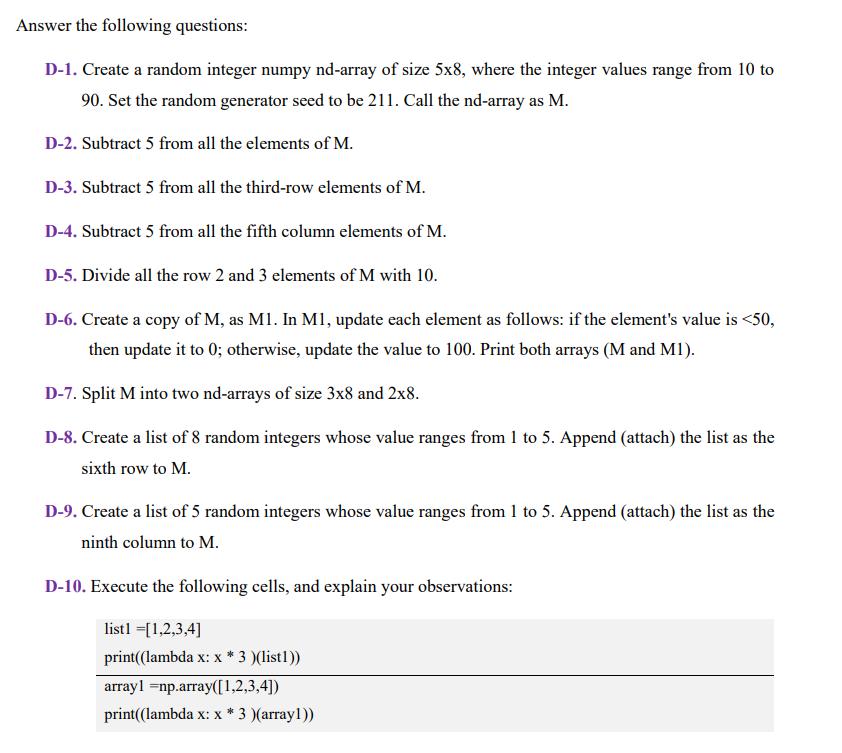Consider the following python methods, available in naive python, or numpy library: C-1. len() C-2. str.replace() C-3. str.join() C-4. np.random.randint() C-5. np.random.rand() C-6. np.sort()


Consider the following python methods, available in naive python, or numpy library: C-1. len() C-2. str.replace() C-3. str.join() C-4. np.random.randint() C-5. np.random.rand() C-6. np.sort() C-7. np.argsort() C-8. array.copy( C-9. array.reshape() C-10. np.argmin() Answer the following questions for each of the above methods: State the purpose/usage of the method. List all the arguments of the method. Classify the arguments as positional or keyword arguments. Write the default values for each of the keyword arguments. Answer the following questions: D-1. Create a random integer numpy nd-array of size 5x8, where the integer values range from 10 to 90. Set the random generator seed to be 211. Call the nd-array as M. D-2. Subtract 5 from all the elements of M. D-3. Subtract 5 from all the third-row elements of M. D-4. Subtract 5 from all the fifth column elements of M. D-5. Divide all the row 2 and 3 elements of M with 10. D-6. Create a copy of M, as M1. In M1, update each element as follows: if the element's value is
Step by Step Solution
3.35 Rating (155 Votes )
There are 3 Steps involved in it
Step: 1
Q1 Sure here are the answers to your questions for each of the mentioned Python methods including whether they are available in naive Python or the NumPy library C1 len PurposeUsage Determines the cou...
See step-by-step solutions with expert insights and AI powered tools for academic success
Step: 2

Step: 3

Ace Your Homework with AI
Get the answers you need in no time with our AI-driven, step-by-step assistance
Get Started


